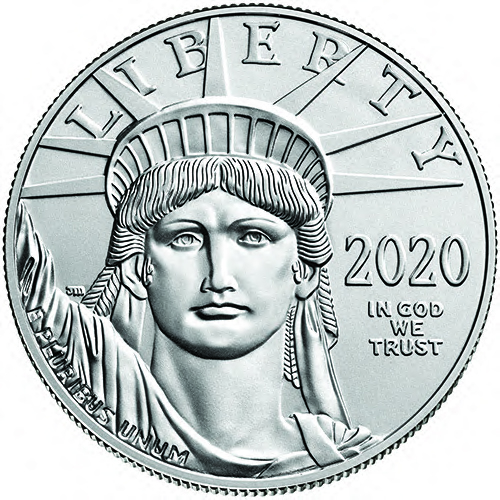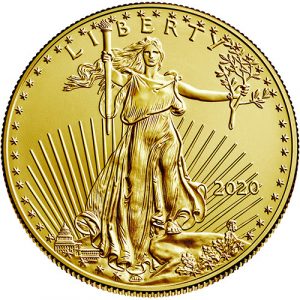
By James Passin
The COVID-19 pandemic has provided cover for the Federal Reserve Board to continue its endless unorthodox monetary operations that have served as the underlying foundation of capital markets since the 2008 global financial crisis. The endless expansion of the monetary base has allowed the continued accumulation of cash by the monopoly tech rent extractors at the cost of “the 99%” while setting the stage for the Era of Hyperinflation.
The Era of Hyperinflation may be manifesting itself in the hilarious Reddit meme-fueled short squeeze of GameStop (NYSE:GME) and other heavily shorted hedge fund short positions by an endless hoard of crazed, righteous retail speculators; in the significant 2021 price hikes for many major drugs by pharmaceutical companies; in the rising trend in grain futures and other food prices; in the massive and sustained increase in Bitcoin (BTC) and other cryptocurrency prices; and in the broad, long-term uptrend in major stock indices.
Quantitative easing and yield curve operations have distorted capital markets to the point at which both bond and equity prices have lost any lasting referential relationship to prospects for future cash flows. In the Age of Repression, market participants themselves are blamed and even punished for the unsanctioned bubbles inevitably created by these corrupt and expansionist monetary policies.
China is reportedly experimenting with a state-sponsored “digital currency” in the city of Shenzhen. Unlike Bitcoin, which is not created or backed by any government and is decentralized and peer-to-peer, start-sponsored digital currencies are created and controlled by governments and therefore subject to the risks (or inevitability) of de-basement, devaluation, micro surveillance, and confiscation. The coming wave of various state-sponsored digital currencies represent a new vector for monetary expansion, hastening the arrival of the Age of Inflation. The onboarding of citizens onto state-sponsored digital currency platforms will ultimately onboard billions of people to Bitcoin and other cryptocurrencies, as digital value will seek to find digital escape routes from centralized digital currencies subjected to unlimited inflation, monitoring, and confiscation.
The Bitcoin price continues to confound mainstream economists and other “experts” who misunderstand the nature of money. During the hyperinflation epoch of the Weimar Republic, the price of one gold mark increased from one paper mark in 1918 to one trillion paper marks in 1923; there is no floor to fiat money and no ceiling to Hard Assets during an Era of Hyperinflation.
With yields on government bonds near zero or even negative, and with almost zero (or even negative) yields on bank deposits, the absurd argument that Bitcoin and gold cannot serve any legitimate monetary role without a yield has fallen apart. Furthermore, the “crypto haters” ignore the historic innovation in decentralized finance, or “DEFI.” DEFI is a mechanism that allows holders of crypto to generate crypto income streams by locking crypto into a smart contract; effectively, DEFI brings together crypto lenders and crypto borrowers into a common liquidity pool. In my view, DEFI will eventually challenge traditional banks and financial intermediaries. The value of crypto locked in DEFI has grown from $690 million one year ago to $15 billion today.

Most of the DEFI platforms are ultimately built on the Ethereum blockchain. Under Ethererum 2.0, Ether (the native token of the Ethereum blockchain) holders will have the option of staking Ether by serving as a Network Validator, resulting in generation of a passive Ether income stream. The more Ether locked in smart contracts, the less Ether is available for sale in the market, improving supply and demand fundamentals and possibly pushing the price of Ether higher. On February 8, 2021, the Chicago Mercantile Exchange launched trading of Ether futures; I anticipated that the launch of Ether futures would allow a wave of institutional investors to onboard into the Ether market, possibly driving up prices further. Bitcoin is already benefiting from large purchases by hedge funds, major banks, large public companies, and other institutional investors. Bitcoin and Ether are both reasonable targets for accumulation by Hard Asset investors; I have been involved with cryptocurrencies and blockchain startups since 2016 and believe that a new cryptocurrency bull market is underway.
The same forces driving up Bitcoin, Ether, and certain cryptocurrencies will soon start lifting the price of gold, silver, and platinum. The only way to preserve purchasing power in the Era of Hyperinflation is to exit the mainstream financial system and hold at least some modest amount of wealth in the form of hard assets, such as gold coins, platinum bars, and cryptocurrencies securely stored in hardware wallets.
Silver looks interesting as the crazed retail traders on Reddit chatrooms are studying the vulnerable structural dynamics of the silver market. Whether or not there is a “flash mob” raid on institutional short sellers in silver, there is a strong supply/demand case for silver, and I would not be surprised to see some outperformance in silver vs. gold, at least in the short-term. However, I continue to avoid generic U.S. silver coins such as common-date Morgan dollars graded MS-63 by NGC and PCGS, as I find the sustained high premiums to melt value unattractive and remain irritated at the impracticality of storing and transporting any material amount in the form of physical silver.
Platinum fundamentals remain extraordinarily bullish as Commercial Traders are massively net short platinum futures (see recent Commitment of Traders reports), production remains constrained at South African platinum group metals mines, and the conjectured unfolds partial rotation in the automotive industry to platinum from palladium and/or rhodium for catalytic converters. However, in my view, each of these data points will be utterly overwhelmed by the torrent of cash pouring into hydrogen energy projects, as it is impossible to generate energy from hydrogen without a catalyst, and the only viable catalyst today is platinum. Biden’s presidential victory will ensure that the United States will join the Green Mob and provide vast subsidies to “green energy projects,” such as hydrogen deployments. A hydrogen fuel cell car requires a greater platinum loading than a gasoline engine car. If you spend a few minutes searching for hydrogen energy projects online, you will get a sense for the magnitude of cash flowing into hydrogen projects; current pilot projects include not only automotive manufacturing but also home heating, long distance transportation, and numerous other applications.
The inexplicable divergence between cash flowing into hydrogen and the stagnating platinum price, which remains at near historic low prices compared to palladium or gold, can only be resolved, in my view, by a massive revaluation of platinum. I continue to accumulate 1 ounce and 10 ounce Swiss-refined platinum bars and PCGS or NGC Mint State 69 and 70 U.S. American Eagle 1 ounce platinum bullion coins at modest premiums. As much as I would like to buy these coins with CAC verification, John Albanese’s Certified Acceptance Corporation doesn’t verify the grades of modern coins.
James Passin is the Executive Chairman of TraceSafe Inc., a company listed on the Canadian Securities Exchange under the symbol TSF. TraceSafe, deployed in mission critical quarantine applications around the world in partnership with leading governments, is a full suite of real-time location management services and contact tracing solutions.














